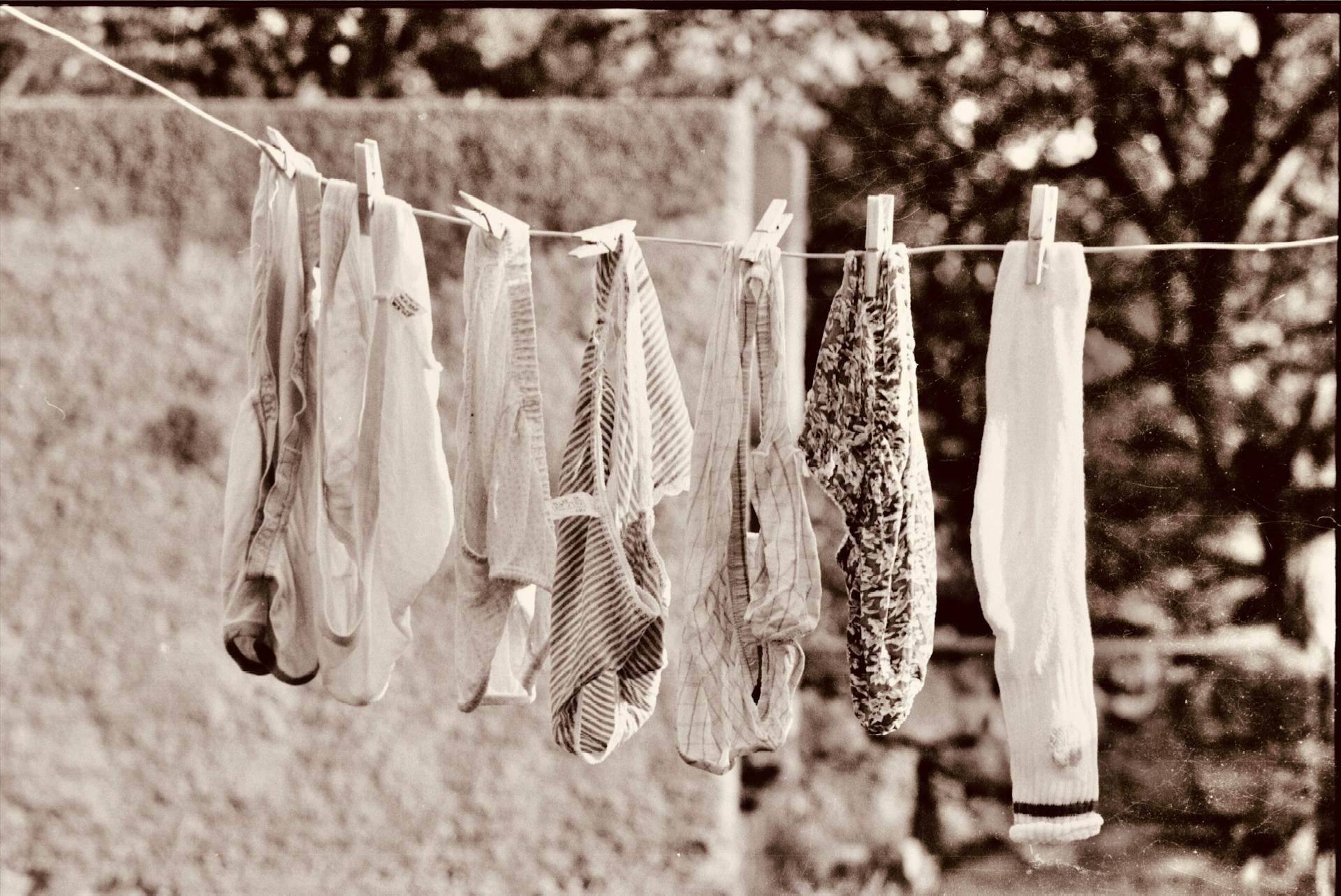
Storing clothing for long-term use can be a tricky undertaking. Without the proper care, your garments will undoubtedly suffer from the ravages of time. So how exactly do you go about protecting your belongings for years to come? In this blog post, we’ll discuss five main tips to help you store your clothing correctly and ensure it’s kept in pristine condition.
1. Choose Appropriate Storage Containers: It’s important that whatever type of container you select for storing clothes has enough room for air circulation and is also free from any insects or odors that could damage the fabric. Cardboard boxes should be avoided as they are pest magnets and will leak air, thereby encouraging mildew growth on clothes. Cloth bags or plastic containers make the best storage options, but if you have a lot of garments then make sure they are breathable otherwise moisture may get trapped inside and create mold and mildew.
2. Always Wash Clothes Before Storing them: To ensure that clothes are in the right condition before storing them away it is always best practice to wash them beforehand – even if they have just been worn once or twice. This prevents dirt, oil, sweat and other unwanted particles from settling into the fabric which could cause discoloration or weaken the fibers over time. Additionally, adding a small amount of baking soda or white vinegar to the washing machine helps deter moths!
3. Use Mothballs to Protect From Insects: When folding garments for long-term storage always add some chemical mothballs inside airtight containers with secured lids such as Tupperware boxes or plastic bags that can be sealed tightly with a zipper - this works best when it comes to deterring pesky moths from eating through your favorite items!
4. Choose A Location Wisely: Wherever you decide to store your clothing should remain cool, dark and dry throughout each season and protected from humidity which often leads to mildew growth on fabrics - thus making basements and attics especially suitable if they meet these conditions. Furthermore, if possible place them in an area where temperatures remain consistent over time - otherwise fluctuations can cause discoloration or fading of certain fabrics!
5. Sort By Color & Fabric Type: When packing away clothing it’s helpful to sort them according to color so that any potential dyes don’t leach onto each other during storage – this could lead to ruined items — and organize by material as well i.e all knits together, dresses etc so nothing happens due to different needs when it comes housing time periods! Doing so also makes retrieval much easier if need-be!
Storing clothing requires some thoughtful preparation — but if done right — can save you money in the long run by preventing damage caused by incorrect storage habits! Keep these five tips in mind next time you put away those winter sweaters until next season - no one wants a surprise moth infestation!
Discover more: Long Dresses
How to preserve clothes for the long term?
Preserving clothes for the long term requires a thoughtful plan. Clothing is an investment, so by taking steps to preserve them and maintain their quality, you can extend the life of your wardrobe.
A number of measures can be taken to protect garments from fading and wear. First, never overload your washing machine or dryer – this can cause fabric fibers to break down faster. Hand wash delicates and invest in a cold water detergent specifically formulated for colored materials to help protect the original color and texture. Hang or lay items flat instead of tumble drying them, and avoid contact with hard-surfaced objects that are likely to damage the fabric.
To further prevent premature aging, store your items correctly. Keep clothing in a cool dark place away from unnecessary sunlight or other sources of heat – this will reduce discoloration caused by prolonged exposure to ultraviolet rays. Ensure clothes have plenty of space to breathe by folding them neatly in drawers rather than hanging them, since hanging may cause shoulders to become misshapen. Always check the care labels on individual garments before cleaning and storing them; following these instructions can make all the difference when it comes to preserving their quality for longer periods of time.
By taking precautions during laundering and storage, you can preserve your favorite clothing items for many years without compromising their quality!
What is the best way to store garments for extended periods?
When it comes to storing garments that you don’t plan on wearing for an extended period, there are a few dos and don’ts you should keep in mind. First and foremost, clean the garments before storing them - this will prevent the growth of bacteria and mildew. Lightweight items, like t-shirts and other cotton items can be washed in cold water before storing; for heavier items like coats and trench coats, dry cleaning is strongly recommended.
Once the garments are clean, it is important that you choose a storage container that is breathable and absorbs moisture – cardboard boxes and Ziploc bags do not fit this bill, so don’t use them. Your best bet, then is to use acid-free tissue paper or muslin wraps. These types of wraps will provide protection against dust mites as well as absorb any extra moisture that may accumulate during storage.
When it comes to choosing the actual storage space for your garments, stored in a dark closet or drawer with air flow exposure is best – preferably a room with temperatures between 50-85 F. When arranging the containers or shelves containing packed away clothing make sure they are away from any source of heat or light including radiators or windows. The storage should also include an insect repellent like cedar chips or bug sprays because insects love nothing more than devouring fabrics! By following these tips your garments will be safe from destruction while they wait until you choose to wear them again!
Intriguing read: Store Fur Coats
How can I protect my clothing from deterioration over time?
Protecting clothing from deterioration over time is a challenge for most fashion enthusiasts and an important way to maintain the longevity of your wardrobe. There are several steps you can take to ensure your clothes last as long as possible, no matter how often you wear them.
Start by selecting higher quality clothing when browsing in stores and online. Quality materials will make all the difference in preserving items over time, as lightweight materials and synthetic fabrics are more prone to wear quicker than higher quality textiles such as wool, cotton or linen. Many eco-friendly apparel brands have UPF protection woven into their products, which helps preserve fabric over extended periods of time.
Also invest in launder bags for delicate items like blouses and sweaters which can potentially be put at risk through regular washing and drying cycles. A mesh launder bag is a great option for protecting these items from snag-prone cycles in the washing machine, while also maintaining the shape of thin knits or sweaters with tassels or pom-poms.
Finally, store your clothing properly - folding rather than hanging garments prevents shoulder dents caused by hangers over time and also minimizes wrinkling on garments that need pressing when it finally comes out of season storage. For wools, hang them on thicker wooden hangers instead of wire or plastic hangers (which can stretch thin knits) and store away from any potential moisture sources. Following these steps will help you protect your clothing from deterioration over time so that you can keep wearing them season after season!
Here's an interesting read: Washing Clothes Kill Fleas
What are some tips for maintaining the quality of clothing for long-term storage?
Clothing is prone to damage and wear and tear during storage, affecting its quality over time. If you would like to ensure that your favourite garments are kept in top condition over the long term, then here are some helpful tips for maintaining their quality and ensuring your wardrobe stays looking its best.
Firstly, if you’re storing clothing for a long period of time, it is important to use the appropriate hanging racks or hangers. This helps to maintain the shape of the garment and prevents it from developing unwanted wrinkles. To further support this, use breathable bags or covers for any folded items, as this will keep them from becoming dusty and will also help prevent moths from infiltrating your clothing.
Secondly, select a suitable storage space for clothing, with low humidity and minimal temperature changes. Clothes also need to be kept away from direct sunlight to avoid fading or discoloration. If there is no other choice but to store clothing in an area of higher humidity or temperature instability, consider using charcoal-based dehumidifier or silica gel bags to absorb moisture.
Finally, be sure to check on stored clothing regularly – rotate hangers periodically, air out any closed bags or containers frequently while keeping an eye out for potential warning signs such as barcode discolouration or rusty hangers which may suggest that your storage space has become too humid. Being mindful of these few tips should help preserve your clothes’ quality for longer periods of time so you can always look stylish!
You might like: How Long Does It Take to Tailor a Suit?
What is the best way to store clothes for the winter months?
Winter storage of clothing can be a daunting task that often slips our minds during the warm months. In order to keep your clothing in pristine condition for the winter months, it’s important to learn how to effectively store them between seasons.
The best way to store your clothes for the winter is by ensuring that you are storing them properly. Fabrics are especially susceptible to a variety of damage from heat, light, and moisture – even when it comes to clothes that you do not wear throughout the winter. Therefore, using airtight containers or vacuum sealed bags can help protect your clothing from humidity and allow any lingering odors or dirt to be kept away from other garments. Wrapping the clothes in either tissue paper or acid-free archival paper adds another layer of protection by keeping out dust and debris. Additionally, sachets of cedar chips can also help keep musty odors away during storage.
The next step is to consider properly storing any items that need special attention - silks, velvet fabrics and everyday items like jeans - should be washed before storing and folded on flat surfaces instead of hung up or crammed into storage boxes. To further protect delicate fabrics consider adding some fabric-friendly detergents or mothballs while they are stored away during the winter months.
By following these tips you won’t have to worry about damaging your favorite winter garments while they are put away for the season. By properly packing and storing away Winter clothing now you can be sure that they will look pristine when it's time to pull them back out when colder weather arrives!
Additional reading: What to Do with Clothes during Fumigation?
How can I make sure that my clothes stay in good condition long term?
Making sure your clothes stay in good shape long term requires some effort and good maintenance habits. One of the best things you can do is read the care labels that come with your clothing. Each label will give you specific guidance on how to wash, dry, and store the item. Pay attention to whether you need to machine wash or hand wash, which detergents to use, how hot of water and what temperature should be used for the dryer.
You also want to use quality hangers that are shaped specifically for certain items like pants, skirts or shirts. Sturdy hangers are always suggested instead of wire hangers or bunched up hangers as they can leave permanent grooves in your clothes over time. If possible, opt for wood types instead of plastic as wood is sturdier and designed to preserve the shape of garments better as well as keep them looking less creased and rumpled when hanging idle in a closet or armoire.
When storing clothes away don’t cram them tightly into a drawer or closet, so there is plenty of air circulating around them. This will help prevent mold from occurring due to lack of ventilation which can damage clothing over time. Vacuum sealed storage containers may be useful for storing out-of-season clothes, but during regular use it’s recommended that you keep them open for frequent airing out as too much moisture trapped inside can cause mildew growth within the container itself and on any clothing stored in them as well.
A fresh viewpoint: Wash Clothes
Sources
- https://medium.com/age-of-awareness/8-ways-to-take-care-of-your-clothes-and-make-them-last-longer-aa907406fdce
- https://www.themanual.com/fashion/how-to-take-care-of-your-clothes-to-last-longer/
- https://www.familyhandyman.com/list/how-to-store-seasonal-clothes/
- https://www.thespruce.com/tips-to-make-clothes-last-longer-2146476
- https://www.thebutlerscloset.com/blogs/expert-advice-blog/how-to-preserve-and-protect-your-wardrobe
- https://www.abc.net.au/everyday/how-to-preserve-store-clothes-extend-lifespan/100163322
- https://downy.com/en-us/fabric-softener-tips/protect-your-clothes/how-to-prevent-clothes-from-fading
- https://www.advantagestorage.net/blog/how-to-prepare-clothing-for-long-term-storage/
- https://www.lifestorage.com/blog/storage/how-to-store-clothes/
- https://www.thezoereport.com/living/how-to-preserve-clothes
Featured Images: pexels.com


